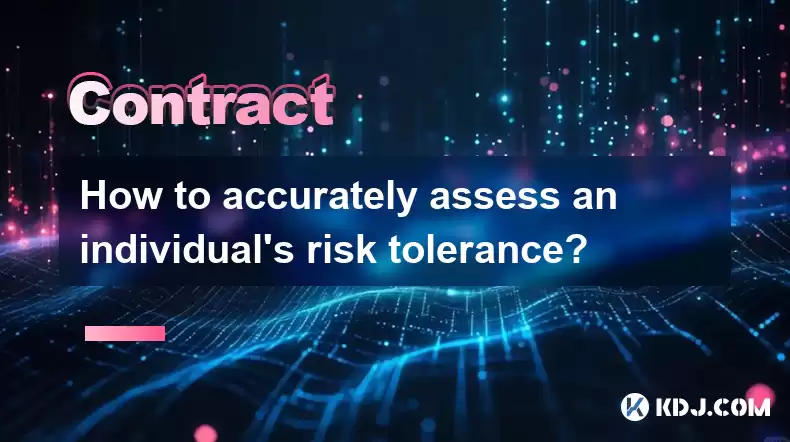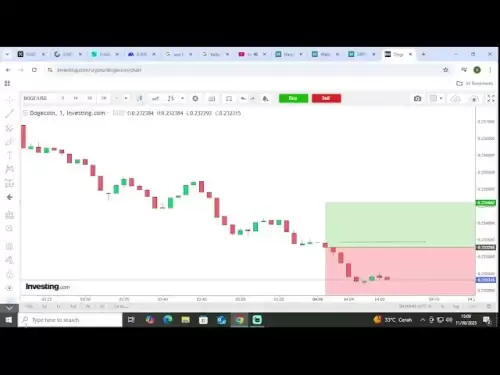-
 Bitcoin
Bitcoin $120100
1.16% -
 Ethereum
Ethereum $4329
2.25% -
 XRP
XRP $3.192
-0.22% -
 Tether USDt
Tether USDt $1.000
-0.01% -
 BNB
BNB $805.2
0.47% -
 Solana
Solana $178.7
-1.85% -
 USDC
USDC $0.9998
0.00% -
 Dogecoin
Dogecoin $0.2305
-1.62% -
 TRON
TRON $0.3445
1.17% -
 Cardano
Cardano $0.7940
-1.28% -
 Hyperliquid
Hyperliquid $44.44
-1.20% -
 Chainlink
Chainlink $21.86
-2.42% -
 Stellar
Stellar $0.4423
-0.15% -
 Sui
Sui $3.728
-3.84% -
 Bitcoin Cash
Bitcoin Cash $584.8
2.19% -
 Hedera
Hedera $0.2524
-2.87% -
 Ethena USDe
Ethena USDe $1.001
-0.02% -
 Avalanche
Avalanche $23.66
-0.78% -
 Litecoin
Litecoin $124.5
0.39% -
 Toncoin
Toncoin $3.399
1.77% -
 UNUS SED LEO
UNUS SED LEO $9.002
-0.44% -
 Shiba Inu
Shiba Inu $0.00001327
-2.10% -
 Uniswap
Uniswap $11.42
2.58% -
 Polkadot
Polkadot $3.957
-2.50% -
 Cronos
Cronos $0.1696
4.50% -
 Dai
Dai $1.000
0.00% -
 Ethena
Ethena $0.8139
3.04% -
 Bitget Token
Bitget Token $4.442
-0.38% -
 Monero
Monero $271.2
2.93% -
 Pepe
Pepe $0.00001168
-2.91%
How to accurately assess an individual’s risk tolerance?
To accurately assess risk tolerance, consider the individual's financial goals, time horizon, income stability, emotional factors, external market conditions, and utilize risk tolerance questionnaires and other assessment tools.
Feb 20, 2025 at 01:48 am

Key Points:
- Understanding financial goals and time horizon
- Analyzing income, expenses, and savings
- Identifying risk tolerance questionnaire and other assessment tools
- Assessing emotional and psychological factors
- Considering external factors and market conditions
How to Accurately Assess an Individual's Risk Tolerance
Step 1: Understand Financial Goals and Time Horizon
Determine an individual's financial objectives, such as retirement planning, purchasing a home, or funding education expenses. Understanding the time frame associated with these goals is crucial for assessing risk tolerance, as investments with longer time horizons typically allow for more risk.
Step 2: Analyze Income, Expenses, and Savings
Evaluating an individual's financial situation provides insights into their ability to withstand potential losses. Assess income stability, essential expenses, discretionary spending, and emergency savings. Individuals with stable income, low expenses, and adequate savings may be more comfortable with higher risk investments.
Step 3: Identify Risk Tolerance Questionnaire and Other Assessment Tools
Specialized questionnaires and online tools can provide a structured framework for evaluating an individual's risk tolerance. These tools use a series of questions to gauge comfort levels with investment volatility, potential losses, and time horizons. Results from these assessments can be valuable in quantifying risk tolerance.
Step 4: Assess Emotional and Psychological Factors
Risk tolerance is not solely based on financial considerations; emotional and psychological factors also play a significant role. Evaluate an individual's personality traits, such as optimism, patience, and resilience. Individuals who are emotionally stable and have a positive outlook on risk may be more suitable for higher risk investments.
Step 5: Consider External Factors and Market Conditions
External factors, such as economic conditions, interest rates, and market volatility, can influence an individual's risk tolerance. Assess the current market environment and consider how the individual's risk tolerance may adjust based on these external factors.
FAQs:
Q: What is risk tolerance?
A: Risk tolerance refers to an individual's comfort level with potential losses and volatility in investments. It is determined by factors such as financial goals, time horizon, income stability, psychological factors, and external market conditions.
Q: Why is it important to assess risk tolerance?
A: Accurately assessing risk tolerance allows individuals to make appropriate investment decisions aligned with their goals and ability to withstand losses. It helps mitigate the risk of pursuing investments that are too risky or conservative.
Q: What are some common risk tolerance questionnaires?
A: Widely used risk tolerance questionnaires include the Morningstar Risk Tolerance Questionnaire, TD Ameritrade Risk Tolerance Assessment, and Charles Schwab Investor Profile Questionnaire.
Q: How can emotional factors impact risk tolerance?
A: Emotional factors, such as fear, greed, and overconfidence, can influence an individual's risk tolerance. Those who are highly influenced by emotions may find it challenging to stay the course during market volatility or may make impulsive investment decisions.
Q: Do market conditions affect risk tolerance?
A: Market conditions can influence an individual's risk tolerance. In bullish markets, investors may become overly optimistic and increase risk exposure. Conversely, in bearish markets, investors may become more risk-averse and seek safer investments. It is important to consider market conditions and adjust risk tolerance accordingly.
Disclaimer:info@kdj.com
The information provided is not trading advice. kdj.com does not assume any responsibility for any investments made based on the information provided in this article. Cryptocurrencies are highly volatile and it is highly recommended that you invest with caution after thorough research!
If you believe that the content used on this website infringes your copyright, please contact us immediately (info@kdj.com) and we will delete it promptly.
- Bitcoin, Solana, MAGACOIN FINANCE: Navigating the 2025 Crypto Landscape
- 2025-08-12 00:30:13
- Cardano, ADA Holders, and Layer Brett: A Meme Coin with Real Utility?
- 2025-08-12 00:50:12
- Bitcoin, Michael Saylor, and Savvy Investors: A New Era of Digital Assets
- 2025-08-12 00:30:13
- Crypto Presales in 2025: Spotting the Next Big Thing with Analyst Insights
- 2025-08-12 00:50:12
- Cloud Mining in 2025: Bitcoin, Litecoin, and the Quest for Passive Income
- 2025-08-12 00:55:32
- Token Security, Agentic AI, Cybersecurity Guide: Navigating the New Frontier
- 2025-08-11 23:00:12
Related knowledge

Is it possible to adjust the leverage on an open position on KuCoin?
Aug 09,2025 at 08:21pm
Understanding Leverage in KuCoin Futures TradingLeverage in KuCoin Futures allows traders to amplify their exposure to price movements by borrowing fu...

What cryptocurrencies are supported as collateral on KuCoin Futures?
Aug 11,2025 at 04:21am
Overview of KuCoin Futures and Collateral MechanismKuCoin Futures is a derivatives trading platform that allows users to trade perpetual and delivery ...

What is the difference between realized and unrealized PNL on KuCoin?
Aug 09,2025 at 01:49am
Understanding Realized and Unrealized PNL on KuCoinWhen trading on KuCoin, especially in futures and perpetual contracts, understanding the distinctio...

How does KuCoin Futures compare against Binance Futures in terms of features?
Aug 09,2025 at 03:22am
Trading Interface and User ExperienceThe trading interface is a critical component when comparing KuCoin Futures and Binance Futures, as it directly i...

How do funding fees on KuCoin Futures affect my overall profit?
Aug 09,2025 at 08:22am
Understanding Funding Fees on KuCoin FuturesFunding fees on KuCoin Futures are periodic payments exchanged between long and short position holders to ...

What is the distinction between mark price and last price on KuCoin?
Aug 08,2025 at 01:58pm
Understanding the Basics of Price in Cryptocurrency TradingIn cryptocurrency exchanges like KuCoin, two key price indicators frequently appear on trad...

Is it possible to adjust the leverage on an open position on KuCoin?
Aug 09,2025 at 08:21pm
Understanding Leverage in KuCoin Futures TradingLeverage in KuCoin Futures allows traders to amplify their exposure to price movements by borrowing fu...

What cryptocurrencies are supported as collateral on KuCoin Futures?
Aug 11,2025 at 04:21am
Overview of KuCoin Futures and Collateral MechanismKuCoin Futures is a derivatives trading platform that allows users to trade perpetual and delivery ...

What is the difference between realized and unrealized PNL on KuCoin?
Aug 09,2025 at 01:49am
Understanding Realized and Unrealized PNL on KuCoinWhen trading on KuCoin, especially in futures and perpetual contracts, understanding the distinctio...

How does KuCoin Futures compare against Binance Futures in terms of features?
Aug 09,2025 at 03:22am
Trading Interface and User ExperienceThe trading interface is a critical component when comparing KuCoin Futures and Binance Futures, as it directly i...

How do funding fees on KuCoin Futures affect my overall profit?
Aug 09,2025 at 08:22am
Understanding Funding Fees on KuCoin FuturesFunding fees on KuCoin Futures are periodic payments exchanged between long and short position holders to ...

What is the distinction between mark price and last price on KuCoin?
Aug 08,2025 at 01:58pm
Understanding the Basics of Price in Cryptocurrency TradingIn cryptocurrency exchanges like KuCoin, two key price indicators frequently appear on trad...
See all articles

























































































